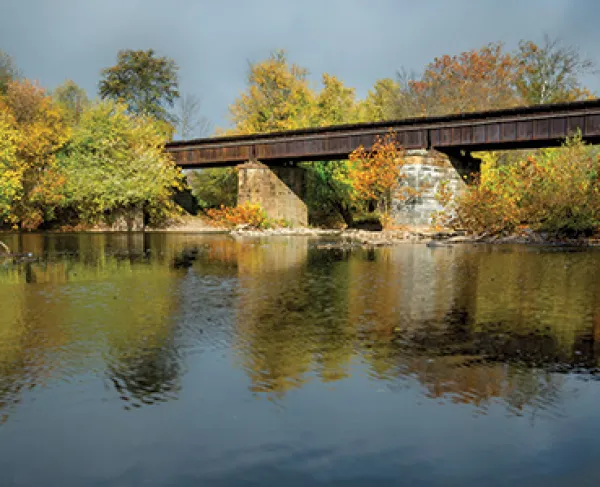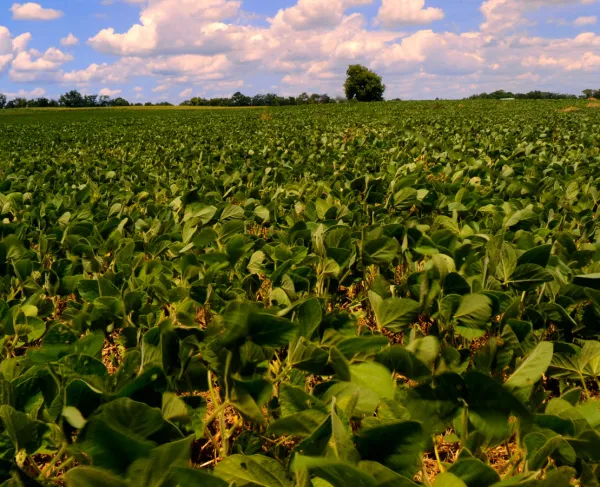Nobody Gets Through
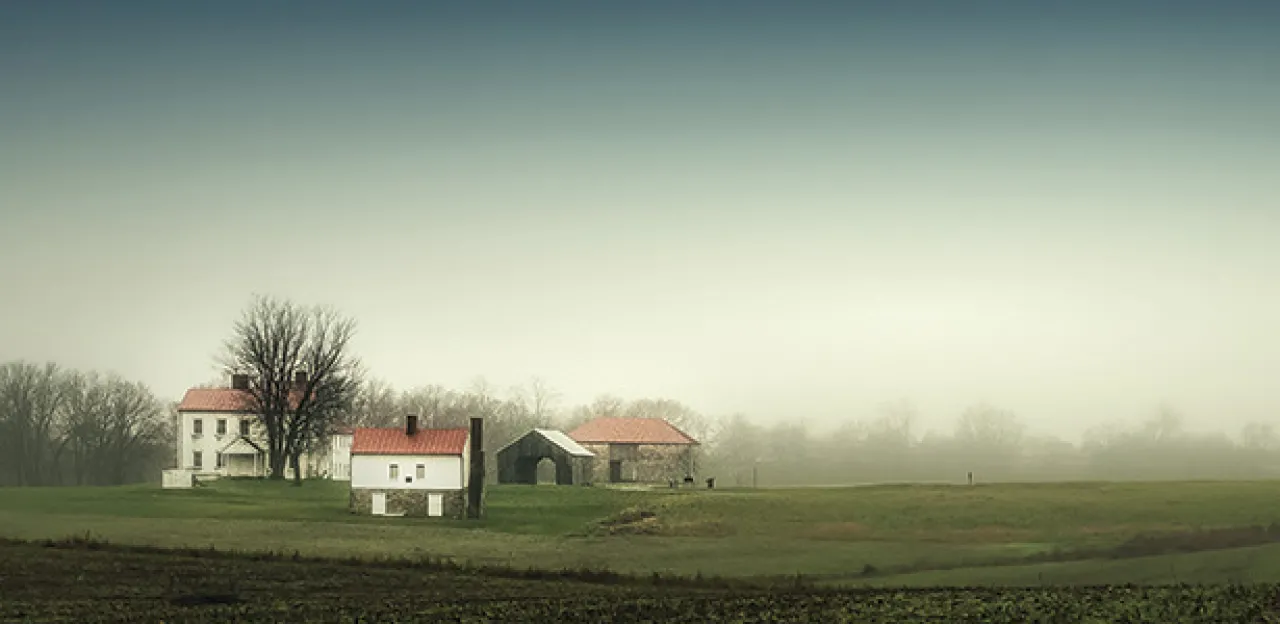
The Battle of Monocacy is the story of an outnumbered Federal force fighting a last-ditch effort to buy time to secure the defense of the Union capital. But the “Battle that Saved Washington” proved especially devastating for one unit that fought there: the 14th New Jersey Infantry.
John Garrett, president of the Baltimore & Ohio Railroad, arrived at the Eutaw House Hotel in Baltimore in early July 1864, frustrated and impatient. There were, without a doubt, thousands of Confederate soldiers moving closer and closer to the Potomac River, threatening his railways, and it seemed to him that no one cared at all.
It had been days since Garrett first telegraphed the Federal high command in Washington, D.C., about reports of Confederate forces marching north, clearing the Shenandoah Valley as they went. Yet for all Garrett’s concerns, officials in Washington shrugged off the reports and continued to focus on the siege lines of Petersburg and the movements against Atlanta.
Tired of being ignored, Garrett arrived at the Eutaw House and made his way inside to meet with Maj. Gen. Lew Wallace, who used the hotel as his headquarters for the Middle Department — a military district encompassing areas in New Jersey, Delaware, Pennsylvania and a handful of counties in Maryland. The region’s western boundary was the Monocacy River, which originates near the Pennsylvania-Maryland border and runs south to the Potomac, skirting just east of Frederick, Md.
Explaining the situation as he knew it, Garrett found Wallace sympathetic and willing to lend an ear. The crux of the railroad president’s concerns was the iron bridge over the Monocacy River that carried the Baltimore & Ohio’s lines out toward West Virginia and Ohio. If that bridge were to be damaged or destroyed, the ability to move men or materials would be severely restricted. Wallace promised to act, assuring Garrett: “The bridge shall not be disturbed without a fight.”
Wallace, however, did not fully understand what headed his way. Approximately 15,000 Confederate soldiers under the command of Lt. Gen. Jubal Early were on the march, just as Garrett had stated. The Army of the Valley District, as Early styled his command, moved north with little opposition after a victory at Lynchburg in the middle of June. Though Early’s subsequent campaign into Maryland is frequently described as a raid, the Confederate high command had higher hopes. Moving north through the Shenandoah Valley, Early confidently wrote to Gen. Robert E. Lee, “I therefore decided it — but to turn down the Valley and proceed according to your instructions to threaten Washington and if I find an opportunity — to take it.”
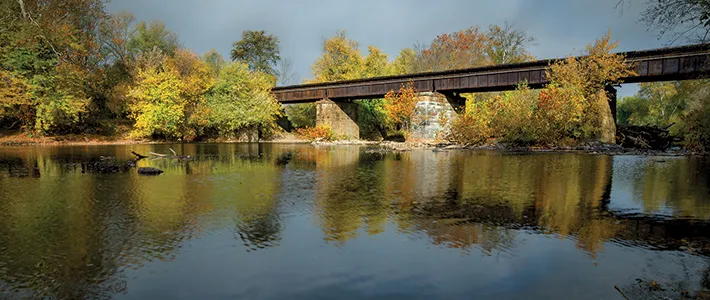
For the beleaguered Union, this march northward could be a deathblow. Federal offensives in Virginia and against Atlanta had been ground to bloody stalemate. The previous summer’s successes at Gettysburg and Vicksburg had been all but forgotten in the face of massive casualties. In Washington, President Abraham Lincoln faced significant opposition even within his own party as the presidential election loomed just months away. If Early’s men seized Washington, Confederate independence could still be achieved. But for all that was at stake, the Federal high command continued to dismiss reports of Early’s movements. On July 5, as the Southerners neared the Potomac River, the commander of Union forces, Lt. Gen. Ulysses S. Grant, still remained confident that Early was among the forces opposing him in the trenches around Petersburg.
Wallace could not immediately leave for the Monocacy crossing, so he dispatched his second-in-command, Brig. Gen. Erastus Tyler, to the railroad bridge on July 3. Tyler was to go to the river and report back, mobilizing the limited number of troops assigned to the Middle Department. Wallace soon followed, heading out to the junction on July 5. He started to gather his forces at the railroad hub of Monocacy Junction, just outside Frederick, even as gray- and butternut-clad soldiers captured Federal supply depots at Martinsburg and Harpers Ferry, W.V., then turned toward the passes through South Mountain.
It was Early’s movements around Harpers Ferry that finally convinced the Union high command of the threat; with Confederate forces poised at the strategic confluence of the Shenandoah and Potomac Rivers, something needed to be done. To that end, early in the morning on July 6, Maj. Gen. Horatio Wright, commanding the Army of the Potomac’s Sixth Corps, received a telegram: “The major-general commanding directs that you send a division at once to City Point prepared to embark there. They are destined for Harpers Ferry and that region.” Just over an hour later, he telegraphed back, committing veteran troops from the Army of the Potomac to the defense of the capital: “Brigadier-General Ricketts, with the Third Division of this corps, is ordered to Washington pursuant to orders just received.” The troops would soon be on the move.
James Ricketts’s two brigades, totaling about 4,000 men, were awoken in their camps around the siege lines facing Petersburg. Forming at about 2:00 a.m., the division soon started off for City Point, the nucleus of the Federal operations against Petersburg. There, the division would board steamships to bring it toward Baltimore.
Included among Ricketts’s first brigade, commanded by Col. William Truex, were the soldiers and officers of the 14th New Jersey Infantry. Raised for service in the summer of 1862, the New Jerseyans had drilled in the fields around Monmouth Court House, the site of a 1778 Revolutionary War battle. After learning the school of the soldier just as their revolutionary grandfathers had, the 14th did not see combat until the fall of 1863. But they more than made up for the delay by fighting extensively in the bloody Overland Campaign, moving from the Wilderness all the way to the trenches of Petersburg. The 350 soldiers who now marched toward City Point under their regimental flags “were glad to go,” the regiment’s historian later wrote, “as they were tired of lying in the sand.”
At City Point, Ricketts’s division boarded the ships waiting there. One New Jerseyan recalled the pleasant ride through the Chesapeake Bay toward Baltimore, noting, “We have our Brigade Band on board which discourses some very sweet music. Some of the boys are dancing a cotillion on the upper deck now.” At Baltimore, they transferred to baggage trains and headed west through the darkness, arriving at Monocacy Junction early in the morning of July 8. Finding that Early had marched past Harpers Ferry, through the South Mountain passes and to the outskirts of Frederick, the trains halted, despite their initial orders to go farther. The decisive battle to protect the nation’s capital would be fought here, outside Frederick and along the banks of the Monocacy.
Yet amid the confusion and hectic troop movements, the moment had a sense of homecoming for the 14th New Jersey. After their training at Monmouth, the 14th had moved south and, in the fall of 1862, had been stationed at Monocacy Junction, guarding the same railroad bridge they now sought to protect. From September 1862 until June 1863, this had been their home.
With the monotony of camp life, soldiers and officers alike developed relationships with the local populace. Maj. Peter Vredenburgh frequently wrote of his interactions with Christian Keefer Thomas, owner of the nearby home of Araby just off Georgetown Pike, which led to the nation’s capital. Though Thomas had Southern sympathies, he and Vredenburgh became fast friends. On one occasion, Vredenburgh borrowed Thomas’s gun to go quail hunting; other times Vredenburgh simply joined the Thomas family for dinner. The Federal officer and the Southern civilian became so close that when the regiment marched off, Vredenburgh left his dog Dash to be cared for by the Thomases. Now, a year later, the New Jerseyans had returned. Vredenburgh made sure to call on the Thomas family once more, and his dog Dash “was delighted to see me and made joyful demonstrations.” This time around, however, there would not be much time for pleasantries. The New Jerseyans’ second stint at Monocacy would not be as uneventful as their first.
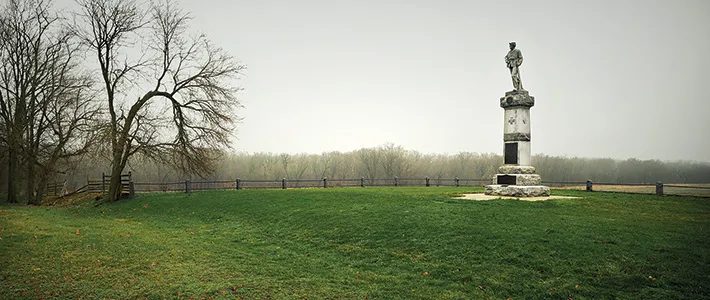
After arriving at the junction, the Federal reinforcements were put into action. “The regiment,” wrote the 14th’s historian, “marched up to Frederick City, and then around a circuit of ten miles,” constantly moving to and fro. Lew Wallace could see the thick clouds of dust coming down off the mountains and toward Frederick, and with his limited manpower, he reached into his bag of tricks, hoping to make his force appear larger than it was. The 14th New Jersey joined numerous other units marching back and forth “by an opening between two pieces of thick woods,” a New Jerseyan later recounted. “After all had passed this opening it was repeated three or four times, making by this stratagem quite a showing of men.”
But the trickery did not work and, as evening fell on July 8, Wallace knew he could not stay on the same side of the Monocacy River as the Confederates. He telegraphed one final time to Washington, D.C., that Early’s men were in a “strong column, moving down the Washington Pike.… I shall withdraw immediately from Frederick City and put myself in position on the road to cover Washington, if necessary.”
A pouring rain drenched the Union soldiers, making their retrograde movement across the Monocacy a miserable one. The 14th New Jersey — despite familiarity with the area — were assigned a guide who got lost in the darkness. “Many of our men who could have led us right had no chance,” a New Jerseyan told later, “but trusted our guide, so that instead of joining our brigade in a few hours, we floundered through the woods and sloughs, and did not join it until just before sunrise, tired, hungry, footsore, and out of humor.”
The New Jerseyans were a part of the 6,500 men Lew Wallace had scrambled together to oppose 15,000 Confederate troops. After their busy night, the New Jerseyans tried to grab a quick breakfast or cup of coffee. Vredenburgh joined the lieutenant colonel of the regiment, Caldwell Hall, at C.K. Thomas’s house for one final reprieve before the battle. The three men had “a couple of drinks each,” before the two officers returned to the lines. Vredenburgh, serving on James Ricketts’s staff, mounted his horse and looked over the battlefield.
The Confederates either had to wrestle control of three strategic bridges away from the Federals, or find an alternative route over the river. A stone bridge fell outside the purview of the New Jerseyans, but two others — the railroad bridge that had started it all with John Garrett’s plea for help and a wooden bridge carrying the Georgetown Pike — sat before the men of Ricketts’s division. Confederate skirmishers began to deploy in the fields in front of the Monocacy River, but rather than risk heavy casualties attacking straight on, settled on attempting to outflank the Federal position.
Confederate artillery shells began to explode around the Federal lines even as the Union soldiers tried to shovel quick breakfasts into their mouths. Soon after, as he peered through field glasses, Wallace noticed Confederate forces moving off to his left. Grabbing a piece of paper, Wallace scribbled a note directing Ricketts to move some of his force to meet the flanking attack. Ricketts in turn ordered Truex’s 1st Brigade to swivel from its position near the covered bridge toward the Thomas home.
The first Confederate attack, a dismounted brigade of Virginia cavalry, met a scathing volley of musketry from Ricketts’s men. “They evidently thought we were recruits,” Vredenburgh wrote to his mother, “and walked right up to us in this open field, without shrinking, dodging, or running, as soldiers usually do in the open, on a charge.”
As the New Jerseyans continued to fire alongside the rest of Truex’s brigade, they pushed the Virginians back, leaving a trail of dead and wounded. The Federals formed their battle line near the property line dividing the land of C.K. Thomas from that of another local farmer, John Worthington (roughly the alignment of modern Interstate 270, where it zips through the battlefield). For protection, the New Jerseyans huddled behind a “hawthorne hedge” and continued to fire with their Springfield rifles. Though the first attack had been easily repulsed, the New Jerseyans lost their commander, Lt. Col. Caldwell Hall, who was badly hit in the arm. Command of the New Jerseyans fell to Capt. James Conover, as Vredenburgh continued to serve on Ricketts’s staff.
By about 2:00 p.m., the same dismounted Virginians assembled to attack a second time. To make sure he had enough men for the point of contact, Wallace ordered the wooden bridge over the Monocacy burned and the rest of Ricketts’s division sent to the Thomas Farm. With Ricketts’s second brigade swinging into action, the 14th found itself at the center of the Union battle line. The land where Vredenburgh had once hunted quail was now becoming dotted with the mangled wreckage of the battle.
The second Confederate attack against the Federal line was not pushed back so easily. Having learned their lesson about advancing straight into the Union musketry, the Virginians swept down and around the left flank of the Federals. Finding a chance to push the Union line back, the Virginians got up to and even inside the Thomas home. The stately brick home made an easy bastion, and the Federals desperately needed to evict the Confederates before they could fortify it.
Riding to the front, Vredenburgh organized a counterattack. “Our boys fought as if they were fighting for their own homes,” he wrote to his parents. The counterattack pushed “at Thomas’ gate then charged up his yard and across the fields right up to his house and fought the rebels around the corner[,] behind the trees and everywhere else before they retired behind his barn.” During the Federal charge, Conover fell with a “ball going clear through [his] leg.” The wound proved mortal, claiming his life a month later. Command of the regiment changed again, falling to Capt. Chauncey Harris.
Vredenburgh pushed into the Thomas house “to see what had become of the family who had extended to me so many acts of kindness.” Running down into the cellar, Vredenburgh found the family “frightened to death.” The New Jerseyan made sure to bring the family a bucket of water and then, taking care to lock doors and cabinets, went back out into the maelstrom.
Having repulsed the first two attacks against their line, the Federals looked to have a hard grip around the Thomas home. But more Confederate cannon began to fire on them, sending shell after shell into their midst. Men and officers began to go down along the entire line.
The climax of the battle came around 3:30 p.m., near the Worthington Farm, opposite the Federal battle line. Confederate Maj. Gen. John B. Gordon formed his three brigades of crack infantry and set his Georgians, Louisianans and Virginians en echelon — a staggered formation — hoping to draw Federal troops out and then crush them in the flank.

As they closed on each other, Union and Confederate soldiers began to blast away; the sharp crackle of musketry rolled over the Thomas farm and sulfurous-smelling dirty-white smoke hung in the air. “I never saw such accurate fire,” Peter Vredenburgh wrote after. “It is queer that I was not hit for I was right up to the front most all the time,” he added in amazement.
Other officers and men in the 14th were not so lucky. Harris, commanding the regiment, was shot “through the left breast . . . and after being placed in an ambulance was shot through the right knee-joint by a rebel bullet.” Taking command from Harris, Capt. Symmes Stults “was shot a few moments after, and died almost instantly.” This left Capt. Jacob Janeway to become the New Jerseyans’ fifth commander during the battle. But he, too, fell, a bullet having struck him in the shoulder “shortly after taking command.” The regiment was now without a commander.
Officers weren’t the only casualties, Confederate bullets also wiped out the regiment’s color guard. “Our color-sergeant (William B. Cottrell), while bravely waving his colors in front of his regiment, received a ball which before striking him passed through and severed the flag-staff just below his left hand. He fell forward and died upon the flag, his life blood staining its folds.” Other hands grabbed the flag, before they too went down, leaving a witness to write, “These four were killed and disabled in almost the time it has taken me to write it, showing the terrible fire we were exposed to at the battle of Monocacy.”
Having gone through five commanders and seen its color guard obliterated, the 14th New Jersey began to give ground along with the rest of Ricketts’s division. The Federals fell back to Georgetown Pike, the ruts created by years of traffic giving the Union soldiers a demi-trench. Continuing the fight, the Federals were soon outflanked by Gordon’s men around 5:00 p.m. “It then became a perfect rout every man for himself,” New Jerseyan William Clark remembered. Ricketts’s surviving Federals retreated to the Old National Road, covered by Wallace’s remaining forces. Turning to Baltimore, the Union soldiers scrambled away from their Confederate pursuers.
Having started around 9:00 a.m., the Battle of Monocacy ended with the collapse of the last of Wallace’s units around 6:30 p.m. Though he had lost, Wallace had accomplished what he had promised John Garrett: He had not given up the railroad bridge without a fight. Wallace’s men also delayed Jubal Early for an entire day along the Monocacy River.
For Early, it was a crucial day. Faced with a bloody battlefield to police and a tired force, the Confederate juggernaut waited until July 10 to continue its march on Washington. By then, however, it was too late. Thanks to Wallace’s stand along the Monocacy River, more Federal reinforcements had time to arrive in Washington, man the city’s defenses and push Early back at the Battle of Fort Stevens. The final invasion of Confederate forces into Maryland ended with Early retreating back into Virginia on July 14.
The cost to protect the capital, however, was staggering. Some 1,200 Federal soldiers and 1,000 Confederate soldiers became casualties along the banks of the Monocacy River. The dead were buried, and the wounded were tended to in General Hospital #1, down the road in Frederick. Having gone into action with about 350 men, the 14th New Jersey suffered 40 percent casualties — 140 men killed or wounded — the heaviest losses of any Federal unit on the field that day. For the 14th, it was the bloodiest day of the entire war; at the end of the battle, only one officer remained fit for duty, and that was under suspicious circumstances. In a report written for Ricketts’s division, the brigade commander noted a “Capt. Benjamin F. Craig, of the Fourteenth New Jersey Volunteers, who proved himself unworthy of his position and whom I would recommend to be dishonorably discharged.” In the aftermath of the nearly unimaginable losses to the regiment’s officer corps, Peter Vredenburgh wrote to his parents, “I am to go back to it to take command.” Following Monocacy, however, there was hardly a regiment left to command — only “ninety-five [men] were left for duty, on the night of July 9th,” the regiment’s historian later wrote. For their service at the railroad junction in 1862–1863 and their subsequent bloodletting there, the New Jerseyans became known as “The Monocacy Regiment.”
The Battle of Monocacy was certainly not the largest or bloodiest battle of the Civil War, but it had outsized ramifications for the war effort. A Confederate invasion that seemed unstoppable found its deadly delay along the banks of the Monocacy River. As Lew Wallace eulogized the Federal dead after the battle, “These men died to save the National Capital, and they did save it.” And right in the middle of the firing line had been the 14th New Jersey, fighting for each other, and their second home along the banks of the Monocacy.
